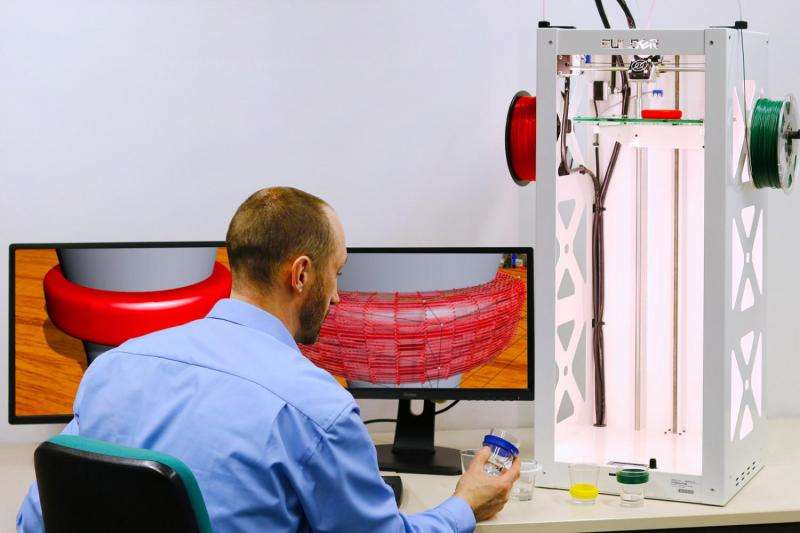Flowing transition between design and simulation

The individualized mass production up to the individual item is a promise of the future delivered by Industrie 4.0. It can only be implemented if there are suitable test methods for the feasibility of individual designs. At the Hannover Messe 2017 from April 24 to 28, 2017, Fraunhofer researchers will present a simulation solution that automatically determines whether the customer's desired design can be realized (Hall 7, Booth D11).
The Fraunhofer Institute for Computer Graphics Research IGD in Darmstadt has developed simulation software that quickly tests the feasibility of individual design wishes. This offers customers and manufacturers new possibilities for individualized mass production. Christian Altenhofen from the department "Interactive Engineering Technologies" at Fraunhofer IGD describes the added value as follows: "We create a smooth transition between design and simulation. How to quickly determine whether an individual design can be implemented is frequently an unresolved problem in industry today. In most cases, CAD data only describes the outer surface and does not contain the volumetric information required for simulations. Generating these afterwards is highly prone to errors, usually requires manual reworking and costs the industry a lot of money." The software of the Fraunhofer researchers from Hesse enables customers and manufacturers to automatically generate the required simulation themselves. This makes it easy to determine whether design proposals created on the computer can be implemented in reality. If this is not the case, the technology suggests how the design of the product can be improved. "The customer still has a lot of possibilities for individual design," says Altenhofen.
Simulating the inner structure of an object
The algorithms use the mathematical concept of "subdivision volumes". Based on this, the researchers use the finite element method to derive physically-based simulation models. Specifically, this means calculating the internal stresses of the model, based on boundary conditions such as gravity or forces induced by the weight of the object. Depending on the distribution and absolute values of the stresses, it is possible to judge whether or not an object is stable. "Subdivision volumes create a consistent virtual model of the inner structure of the object," the Fraunhofer expert says in describing the technology. This means that the approach goes beyond the traditional CAD representations as they only describe surfaces of three-dimensional objects and do not allow any conclusions to be drawn about the interior. "Our approach directly includes the volumetric representation together with the surface information that defines the actual design. This means that customers and manufacturers have access to the necessary information for the simulation during the entire design process," Altenhofen says.
For the Hannover Messe 2017, the researchers have developed a prototype of their simulation solution, which conveys the idea for possible applications or possible future developments: They manufacture individual plastic holders for espresso cups. Via an interactive use interface, the visitor can design his own cup holder. If the idea cannot be realized or does not withstand the later physical stresses, the visitor receives instructions which parameters he can change to prevent this. "Additive manufacturing is a powerful example of how our technology can be applied. In principle, however, our approach is applicable to many different manufacturing processes and different materials," says Altenhofen.
Provided by Fraunhofer-Gesellschaft





















